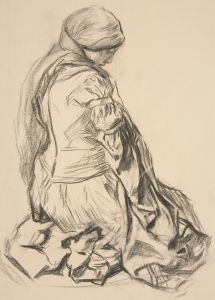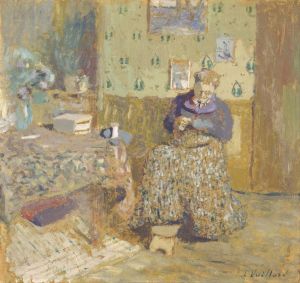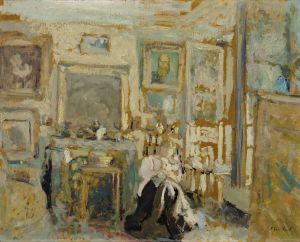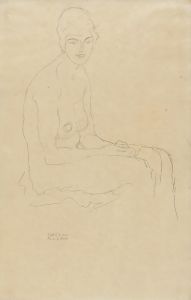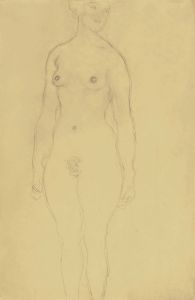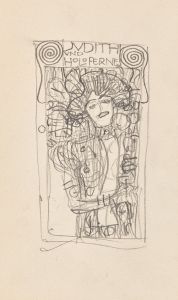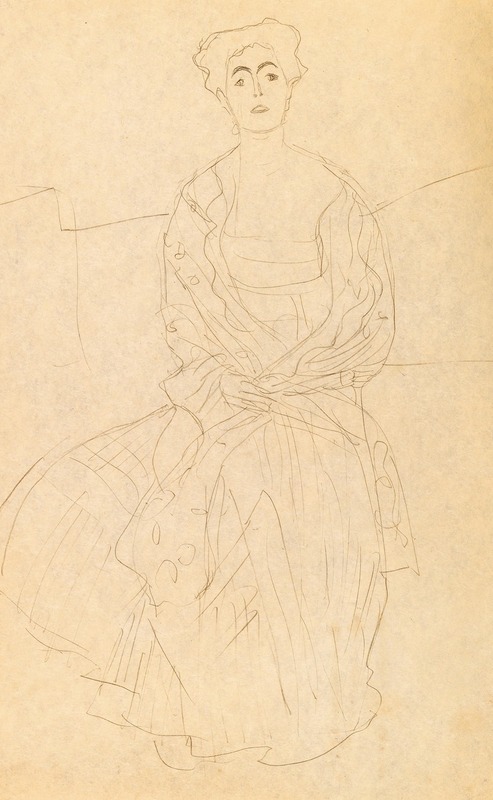
Margaret Stonborough-Wittgenstein sitzend Studie
A hand-painted replica of Gustav Klimt’s masterpiece Margaret Stonborough-Wittgenstein sitzend Studie, meticulously crafted by professional artists to capture the true essence of the original. Each piece is created with museum-quality canvas and rare mineral pigments, carefully painted by experienced artists with delicate brushstrokes and rich, layered colors to perfectly recreate the texture of the original artwork. Unlike machine-printed reproductions, this hand-painted version brings the painting to life, infused with the artist’s emotions and skill in every stroke. Whether for personal collection or home decoration, it instantly elevates the artistic atmosphere of any space.
Gustav Klimt, an Austrian symbolist painter and one of the most prominent members of the Vienna Secession movement, created numerous portraits throughout his career, capturing the essence of his subjects with his distinctive style. One of his lesser-known works is the "Margaret Stonborough-Wittgenstein sitzend Studie," which translates to "Margaret Stonborough-Wittgenstein Seated Study." This piece is a study or preparatory work for a portrait of Margaret Stonborough-Wittgenstein, a member of the influential Wittgenstein family.
Margaret Stonborough-Wittgenstein was born into the wealthy and culturally significant Wittgenstein family in Vienna. Her brother, Ludwig Wittgenstein, became one of the most important philosophers of the 20th century. The Wittgenstein family was known for their patronage of the arts, and their home was a gathering place for many intellectuals and artists of the time. Margaret herself was an intelligent and cultured woman, deeply involved in the arts and society.
Klimt's study of Margaret Stonborough-Wittgenstein is part of his broader body of work that focuses on portraiture, particularly of women from Vienna's upper class. Klimt's portraits are renowned for their intricate detail, use of gold leaf, and symbolic elements, although studies like this one would typically focus more on capturing the likeness and essence of the subject rather than the elaborate backgrounds and decorative elements seen in his finished works.
The "Margaret Stonborough-Wittgenstein sitzend Studie" is a testament to Klimt's skill in capturing the personality and presence of his subjects. While the study itself may not include the elaborate ornamentation typical of Klimt's finished portraits, it provides insight into his process and the way he approached the depiction of his subjects. Studies like this one were essential for Klimt to explore composition, pose, and the emotional tone he wished to convey in the final piece.
Klimt's work during this period was characterized by a transition from his earlier, more academic style to the more decorative and symbolic approach for which he is best known. This study reflects his interest in the human form and his ability to convey depth and character through relatively simple means. The focus on Margaret's posture and expression in the study suggests Klimt's intention to portray her as a figure of grace and intellect, qualities that were highly regarded in the cultural milieu of Vienna at the time.
Although the study itself may not be as widely recognized as some of Klimt's other works, it remains an important piece for understanding his artistic process and the cultural context in which he worked. The connection to the Wittgenstein family also highlights the intersection of art, philosophy, and society in early 20th-century Vienna, a period of significant cultural and intellectual activity.
In summary, the "Margaret Stonborough-Wittgenstein sitzend Studie" by Gustav Klimt is a preparatory work that offers insight into the artist's approach to portraiture and his ability to capture the essence of his subjects. It reflects both the artistic and cultural environment of Vienna during Klimt's time and the significant role played by the Wittgenstein family in the arts.





